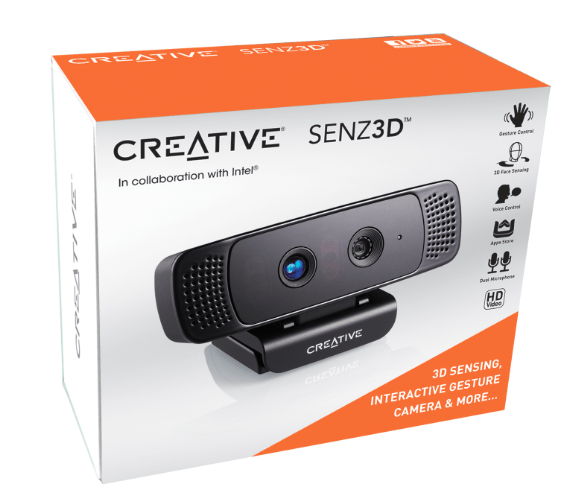Nintendo and then Microsoft pioneered the use of 3D gestures primarily in gaming. Recently LeapMotion has worked long and hard to bring 3D Gestures in with its Leap small brick devices which Asus and HP are now adopting for their laptops and PCs. Users will get to try out the Leap Motion device on July 22 for about $80 bucks and with support from diverse software vendors such as Autodesk, Corel, Disney plus a bevy of game providers.
The argument is being made that gesture controllers like LeapMotion will provide new creative opportunities with gestures producing a broader range of styles in painting and 3D design. Now to this initial wave of gesture control, add a new device – the Creative Senz3D inspired by Intel’s Perceptual Computing initiative.
The difference with the Creative Senzz 3D is that this is a camera with dual sensors for gesture and facial recognition. Coupled with Intel’s Perceptual Computing initiative which just got $100million in funding this Perceptual Computing SDK, which includes a library of algorithms for gesture tracking, speech recognition, face analysis, and augmented reality is shaking up creative inputs to PCs. This SDK has already inspired a number of gesture applications for the Creative Senz 3D which likely go to market in the Fall of 2013.
For example, Skype integration provides a more accurate face-to-face conversation. In addition, Skype users can change the backdrop because the Senz 3D unit recognizes the face as it moves on the Skype screen.So Intel has collaborated with Personify to develop a Skype chat plug-in that lets you swap out the live background for any template you choose. For Valve’s Portal 2 game the Senz 3D controller sees your hand and finger placement allowing for finer control of the game scene. Meanwhile Intel and Nanduri are working on a 2D to 3D scene conversion app that transforms and rotates 2D scenes into 3D scenes. The art and game possibilities are the first venues being considered for these 2D to 3D conversions. With $100million to draw upon, one suspects software vendors will find new ways to work with gestures and other perceptual computing inputs.
More broadly, PC and laptop makers are fighting back against the touch and voice only world of smartphones and tablets. 3D gestures, along with tried and true keyboard shortcuts, precise mouse control and stylus inputs are perceived as giving PCs and laptop a richer creative input space as they take on touch screen capabilities. From the photo artist and 3D design point of view the 3D Gesture UI revolution will be a welcome creative option.

